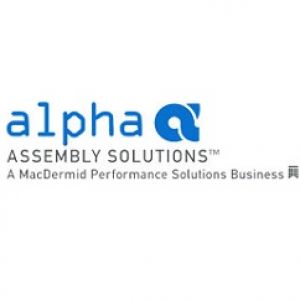Things You Should Know About PV Ribbon
Posted by Alphaassembly on March 24th, 2017
Used on photovoltaic technologies, PV ribbon is a tinned, hot-dipped conductor that collects the current from PV cells. It is the conductor that links individual solar cells, and carries the generated current to a distribution system. Copper is typically the material used in crafting PV ribbon. Manufacturers may use the metal in different grades, while making sure that the particular grade maintains high conductivity. That way, the solar panel is guaranteed to be highly efficient.
Some of the different types of copper used in making PV ribbons are oxygen-free electronic copper, electrolytic-tough-itch copper, and oxygen-free copper. At times, manufacturers may use aluminum to create PV ribbons, but that is less common. PV ribbon is sometimes known as ‘tabbing ribbon’ and it is the interconnect material crucial to the PV assembly process. It is designed to be soft, and it is typically supplied in two different types: PV interconnect ribbon (stringing ribbon) and bussing ribbon.
Stringing ribbon is the photovoltaic cell interconnect and it is usually 2mm wide. It links individual PV cells in a cluster to allow current to be delivered to the bussing ribbon, which is usually 5mm wide and used in PV module assembly for interconnected PV cell clusters. Some manufacturers make PV interconnect ribbon in sizes ranging from 1mm to 3mm wide, with a thickness that goes from 0.085mm to 0.2mm. Bussing ribbon sends current to the junction box of the module for the final output. Some manufacturers create bus bar ribbons in sizes that go from 3mm to 6mm wide and 0.2mm to 0.5mm thick.
PV ribbon is crucial to many photovoltaic systems, so you should examine its features and make sure that it guarantees proper function, longevity, and efficiency of the solar panels. When examining the quality of PV ribbon, take note of the yield strength, which is the minimal stress needed to cause deformity to the material. This is crucial because if the yield strength is high, it can cause too much stress on the solar panels, resulting in breakage. Hence, look for a ribbon that has sufficiently minimal yield strength that is suitable to the thickness of the panel. Another factor to consider is the elongation of the PV ribbon. Consider a higher elongation for high ductility, which can withstand expansion and contraction cycles caused by outdoor temperatures. Make sure the elongation is at least 20% or higher.
About the Author:
Alpha Assembly Solutions Inc. is a premier company engaged in the development and manufacture of high quality electronics assembly materials. Since the year of its inception, way back in 1872, the company has played its role on the frontline of innovation, bringing many first-to-market products to the fore thereby, creating a premier niche for itself in the market.


